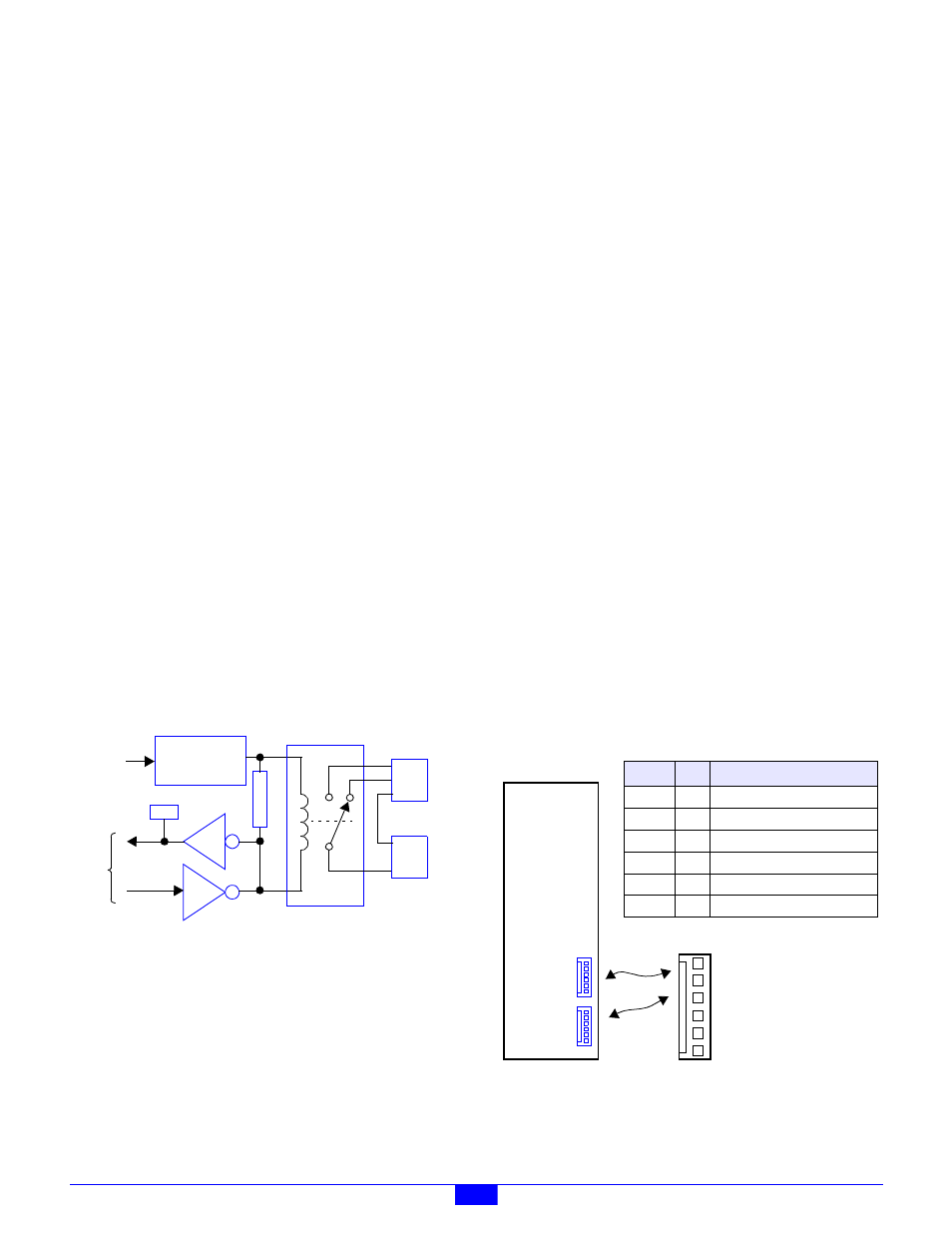1 introduction, 2 hardware configuration, 1 iom network connector – Sensoray 2600 User Manual
Page 63: 2 interlock power connectors

2600 Family Instruction Manual
58
Chapter 10 : Model 2650 Relay Module
Chapter 10: Model 2650 Relay Module
10.1 Introduction
Models 2650 and 2650-0 are smart I/O modules (IOM) that
control up to eight mechanical relays. Each relay switches
single-phase power—up to 10A, 250V—through normally
open and/or normally closed contacts. Relay channels are
referenced by channel number, ranging from 0 to 7.
The module’s microcontroller, which provides I/O services to a
remote client, communicates with the client by means of a
standard Category-5 UTP cable over an optically isolated,
asynchronous serial interface.
As shown in Figure 51, each relay channel includes:
• Finger-safe socket for a standard RH1B-U relay.
• Active-low, open-collector coil driver with induced-EMF
suppression diode for inductive load protection.
• Coil driver monitor circuit. This feature, which is
provided primarily for diagnostics support, enables the
driver’s physical output state to be acquired by the client.
• Indicator LED that lights when the coil driver is energized.
• Two finger-safe connectors per channel, one for the line
connection and one for the load. Loads may have either a
normally open or normally closed connection to line
power.
• Shunt programming matrix for implementing interlocked
fail-safe operation.
Figure 51: Relay Channel Block Diagram
In addition, the following components are supplied for each
relay channel on model 2650 (not supplied with model
2650-0):
• Single-pole, double throw relay.
• Relay hold-down clip.
10.2 Hardware Configuration
The 2650 relay module (RLY) is configured by installing
programming shunts and connecting various cables to the
module as described in this section.
10.2.1 IOM Network Connector
A single RJ-45 connector, J9, is used to connect the 2650
module to its client. This should be mated to a standard UTP
(unshielded twisted pair) Category-5 cable.
The other end of this cable will be connected to one of the
sixteen IOM ports on a model 2601 module.
10.2.2 Interlock Power Connectors
Each relay channel is powered from an external 24VDC power
source. At least one external 24VDC power source is required
to make the relay channels functional. Up to six independent,
external power sources are supported; as many as five of these
sources may be left open or wired to arbitrary, positive DC
voltage sources up to 24VDC, but any source that will power
relays must supply 24VDC.
Connectors P17 and P18 supply power to relay channels from
external power sources. All external power sources must
supply positive DC voltages with respect to system ground.
The current return of each external power source must be
connected to the system ground.
As shown in Figure 52, connectors P17 and P18 are identical in
function and pinout. The external power sources may be
connected to either P17 or P18. If other IOMs require access
to these external power sources, the unused connector may be
used to daisy-chain power out to other IOMs. In this manner,
power can be distributed to any arbitrary number of external
IOMs without the use of dedicated power distribution terminal
blocks.
Figure 52: Pinouts of Connectors P17 and P18
The external power sources need not be derived from interlock
contacts, but by employing interlocked power sources, the
system interlock cabling can be minimized. This feature is
especially useful for guaranteeing the fail-safe shutdown of
P
u
l
l
-
u
p
Shunt
Programming
Matrix
To
External
Power
Finger-Safe
LED
open
col.
µC
Hot
Neut
NO
NC
COM
Line
Load
Connectors
RH1B-U
Socket
2650
P17
P18
6 - PWR4
5 - PWR3
4 - PWR2
2 - PWR0
1 - +24V
3 - PWR1
Name Pin
Function
+24V
1
+24V power, always on.
PWR0
2
Optional positive DC power #0.
PWR1
3
Optional positive DC power #1.
PWR2
4
Optional positive DC power #2.
PWR3
5
Optional positive DC power #3.
PWR4
6
Optional positive DC power #4.
(top view)
